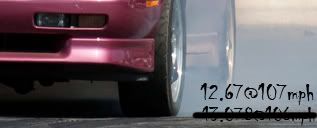Hey guys, does anyone know what is the highest "safe" compression ratio for use with 89 octane gas that can be done on a 3.1 engine?? would it be better to try to do a "stroked" rebuild, or just get the bump in compression ratio from new pistons???
which camshaft would get the best performance from the motor??
I know I cant mention fuel efficiency when talking about performance, but if I just wanted the highest compression ratio to get the best fuel efficiency, what ratio would I be shooting at??
I am not going to supercharge or turbo this motor, but it would be nice to have a solidly efficient naturally aspirated engine under the hood.
I already am planning the switch to the 3400 ported intake and 3400 heads,
I just want to make sure I have a damn good bottom end to go with that..
thanks in advance for all the help..
which camshaft would get the best performance from the motor??
I know I cant mention fuel efficiency when talking about performance, but if I just wanted the highest compression ratio to get the best fuel efficiency, what ratio would I be shooting at??
I am not going to supercharge or turbo this motor, but it would be nice to have a solidly efficient naturally aspirated engine under the hood.
I already am planning the switch to the 3400 ported intake and 3400 heads,
I just want to make sure I have a damn good bottom end to go with that..
thanks in advance for all the help..


Comment